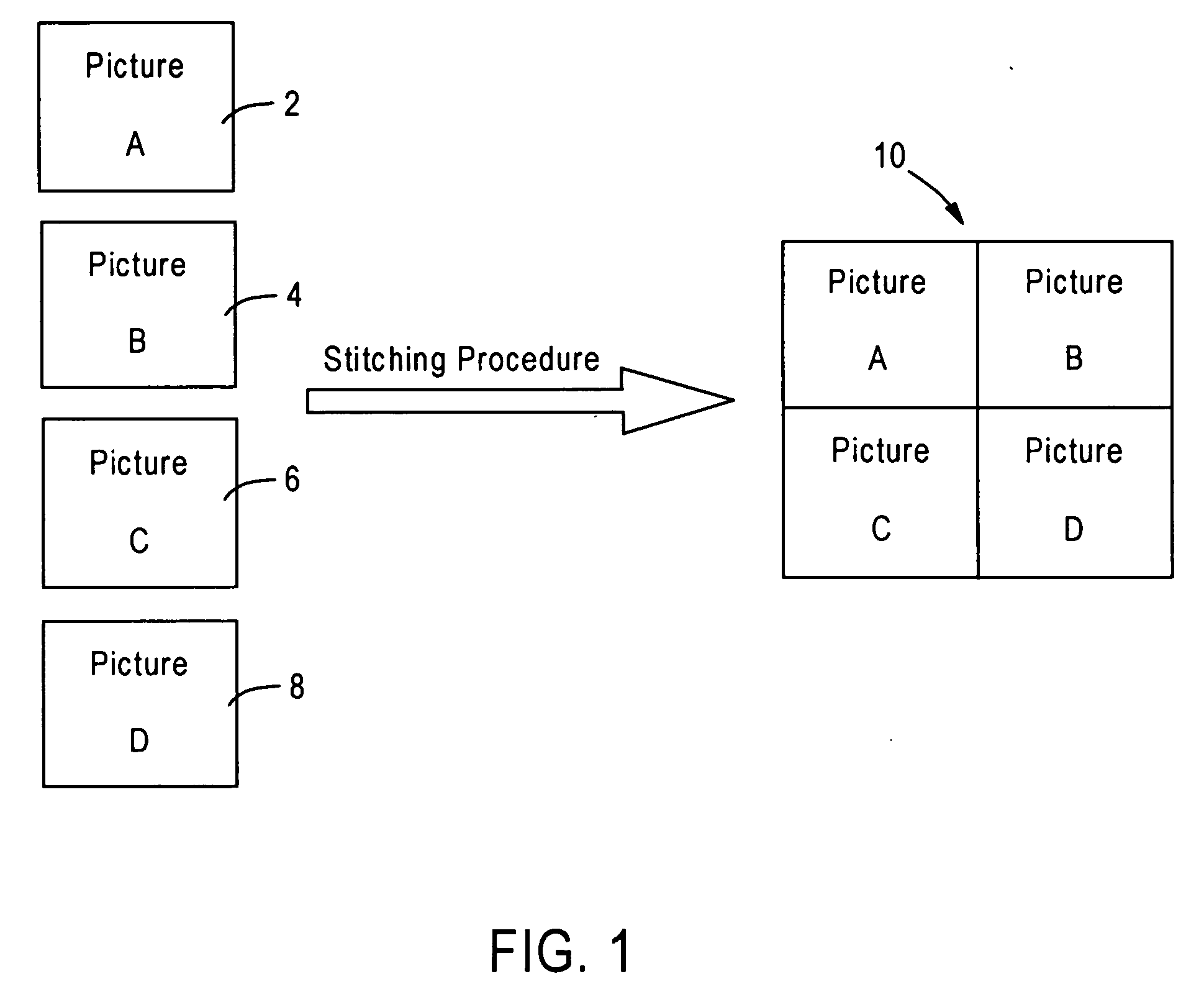Stitching of video for continuous presence multipoint video conferencing
a multi-point video and video conference technology, applied in the field of video stitching for continuous presence multi-point video conference, can solve the problems of synchronization errors that build up between the encoder and the decoder, poor picture quality and inaccurate prediction, and computational complexity of the pixel domain approach, so as to prevent the propagation of drift errors
- Summary
- Abstract
- Description
- Claims
- Application Information
AI Technical Summary
Benefits of technology
Problems solved by technology
Method used
Image
Examples
Embodiment Construction
The present invention relates to a improved methods for performing video stitching in multipoint video conferencing systems. The method includes a hybrid approach to video stitching that combines the benefits of pixel domain stitching with those of the compressed domain approach. The result is an effective inexpensive method for providing video stitching in multi-point video conferences. Additional methods include a lossless method for H.263 video stitching using annex K; a nearly compressed domain approach for H.263 video stitching without any of its optional annexes; and an alternative practical approach to the H.263 stitching using payload header information in RTP packets over IP networks.
I. Hybrid Approach to Video Stitching
The drift-free hybrid approach provides a compromise between the excessive amounts of processing required to re-encode an ideal stitched video sequence assembled in the pixel domain, and the synchronization drift errors that may accumulate in the decode...
PUM
 Login to View More
Login to View More Abstract
Description
Claims
Application Information
 Login to View More
Login to View More - R&D
- Intellectual Property
- Life Sciences
- Materials
- Tech Scout
- Unparalleled Data Quality
- Higher Quality Content
- 60% Fewer Hallucinations
Browse by: Latest US Patents, China's latest patents, Technical Efficacy Thesaurus, Application Domain, Technology Topic, Popular Technical Reports.
© 2025 PatSnap. All rights reserved.Legal|Privacy policy|Modern Slavery Act Transparency Statement|Sitemap|About US| Contact US: help@patsnap.com



